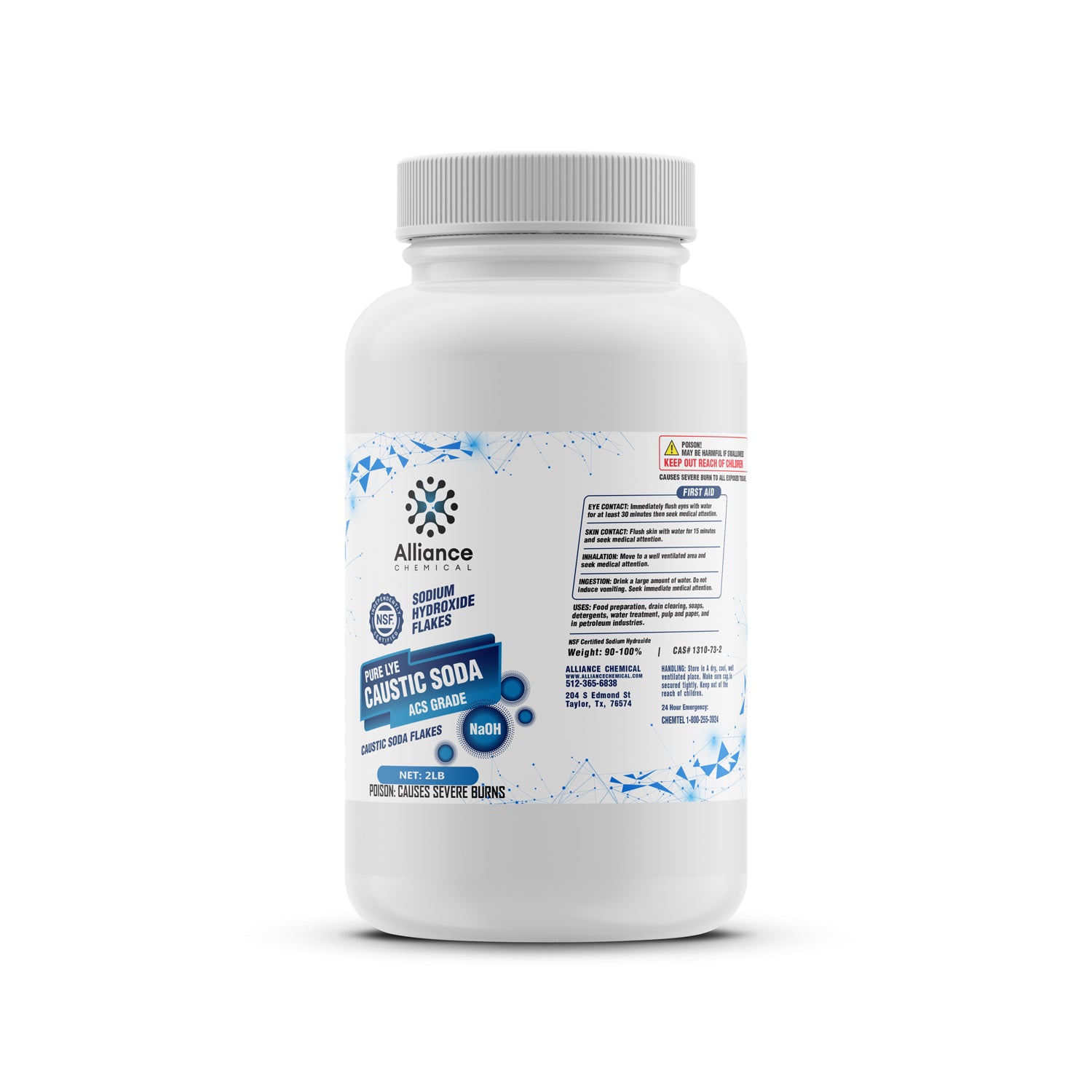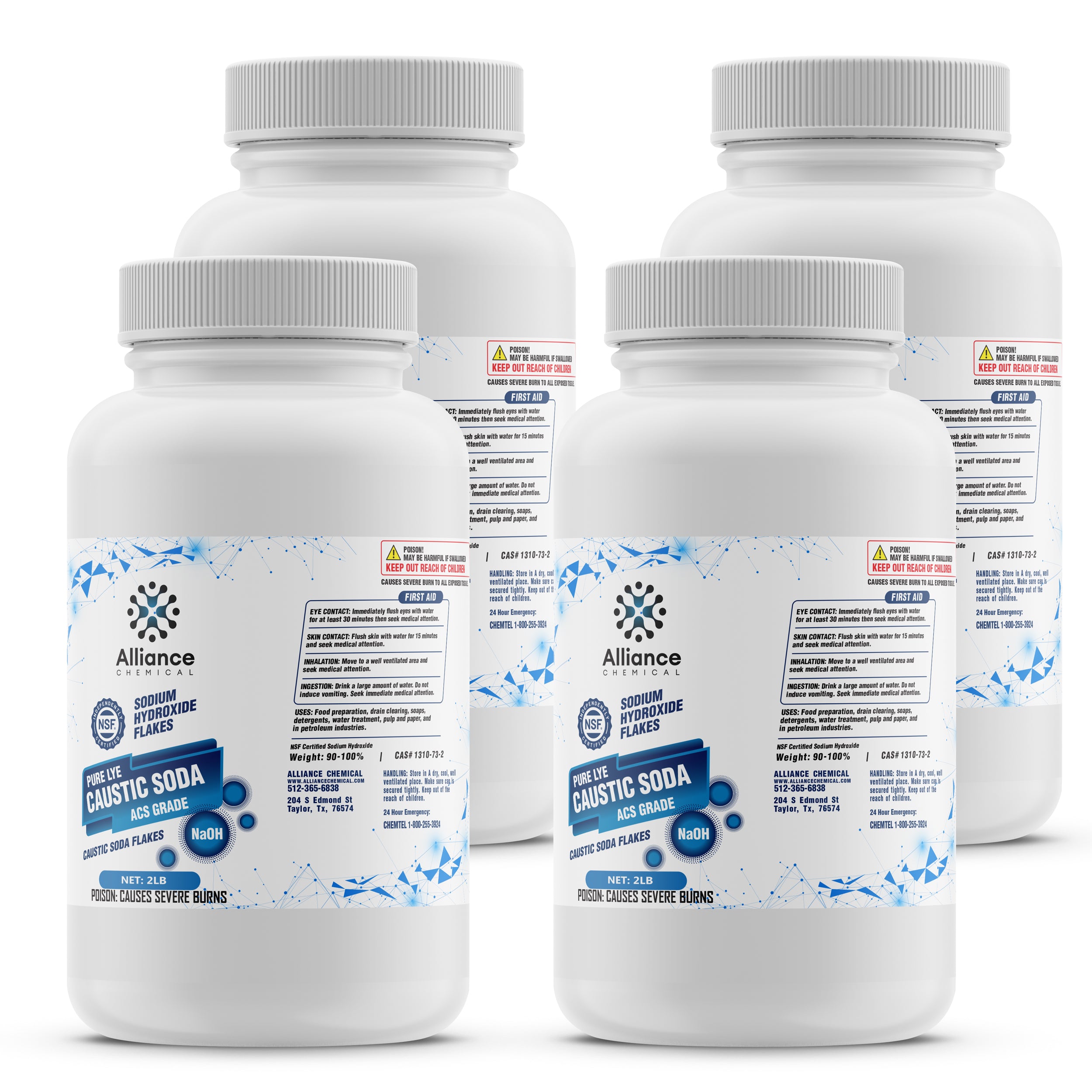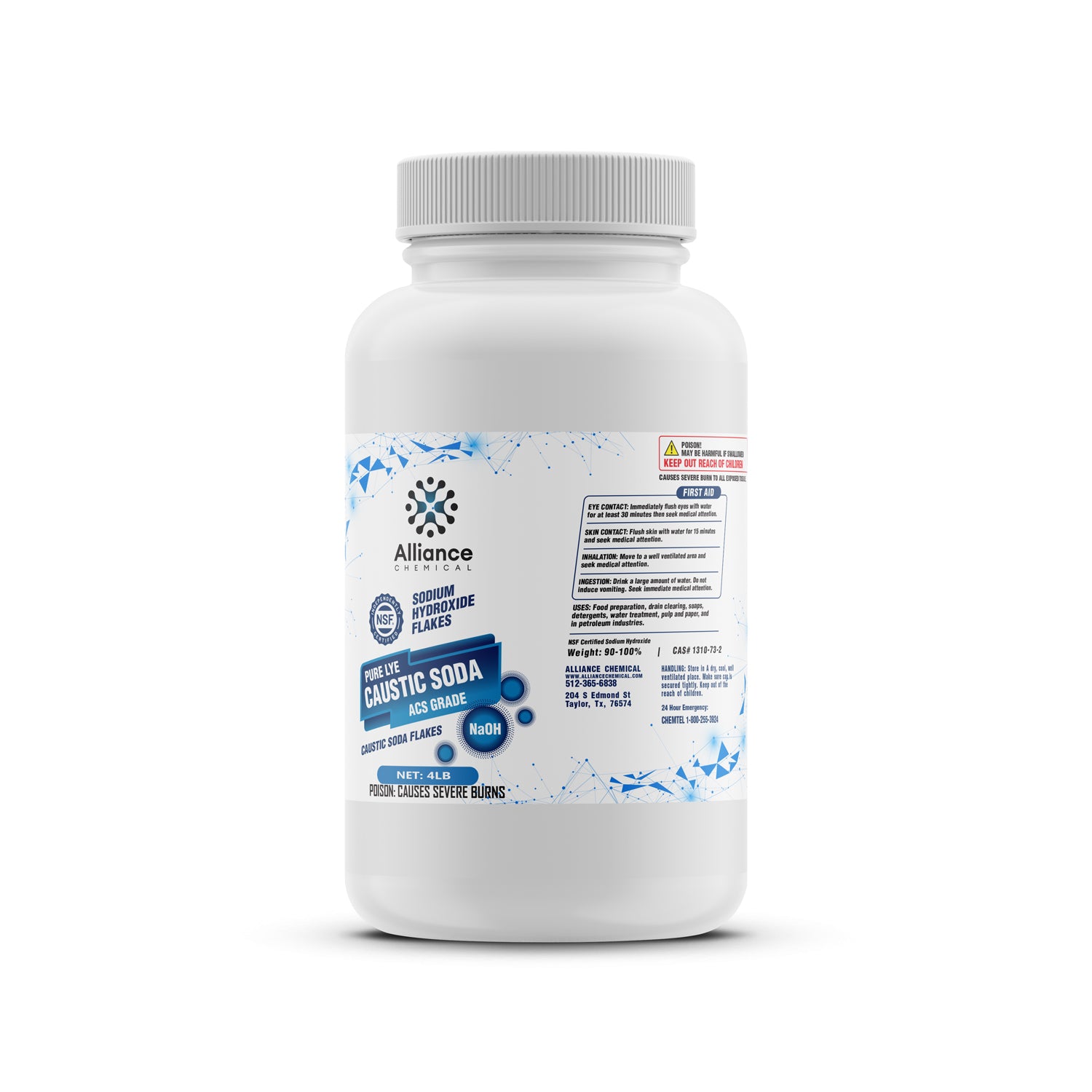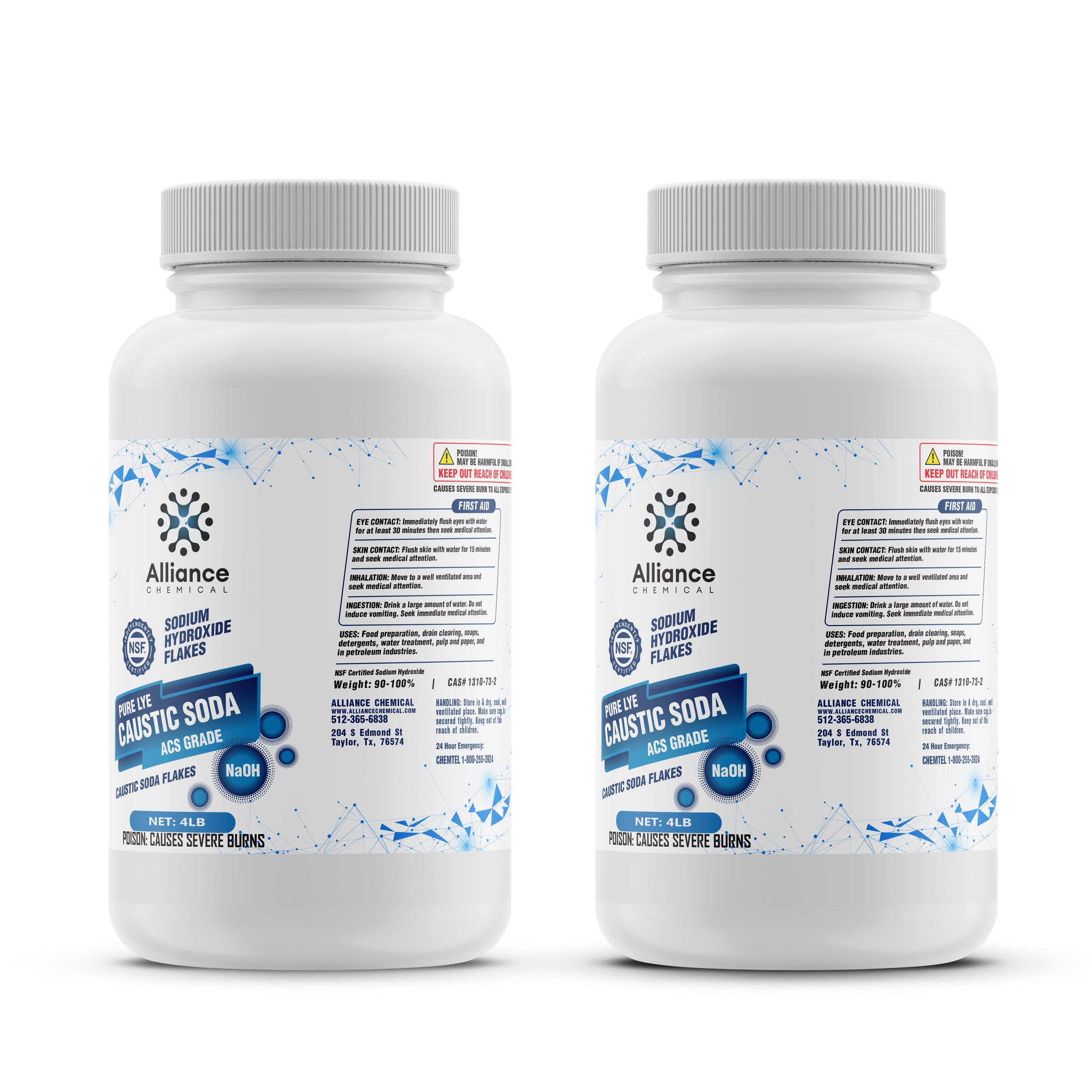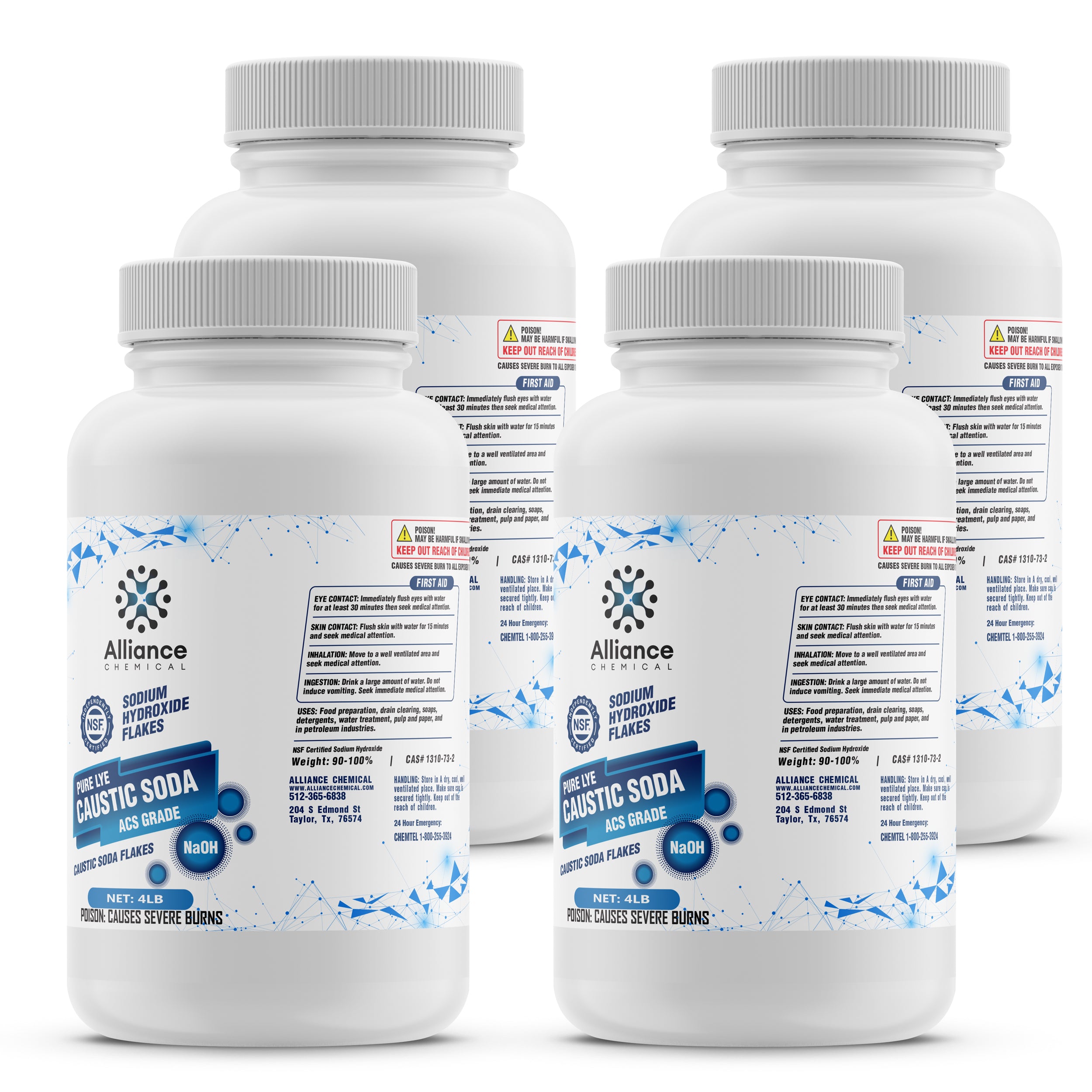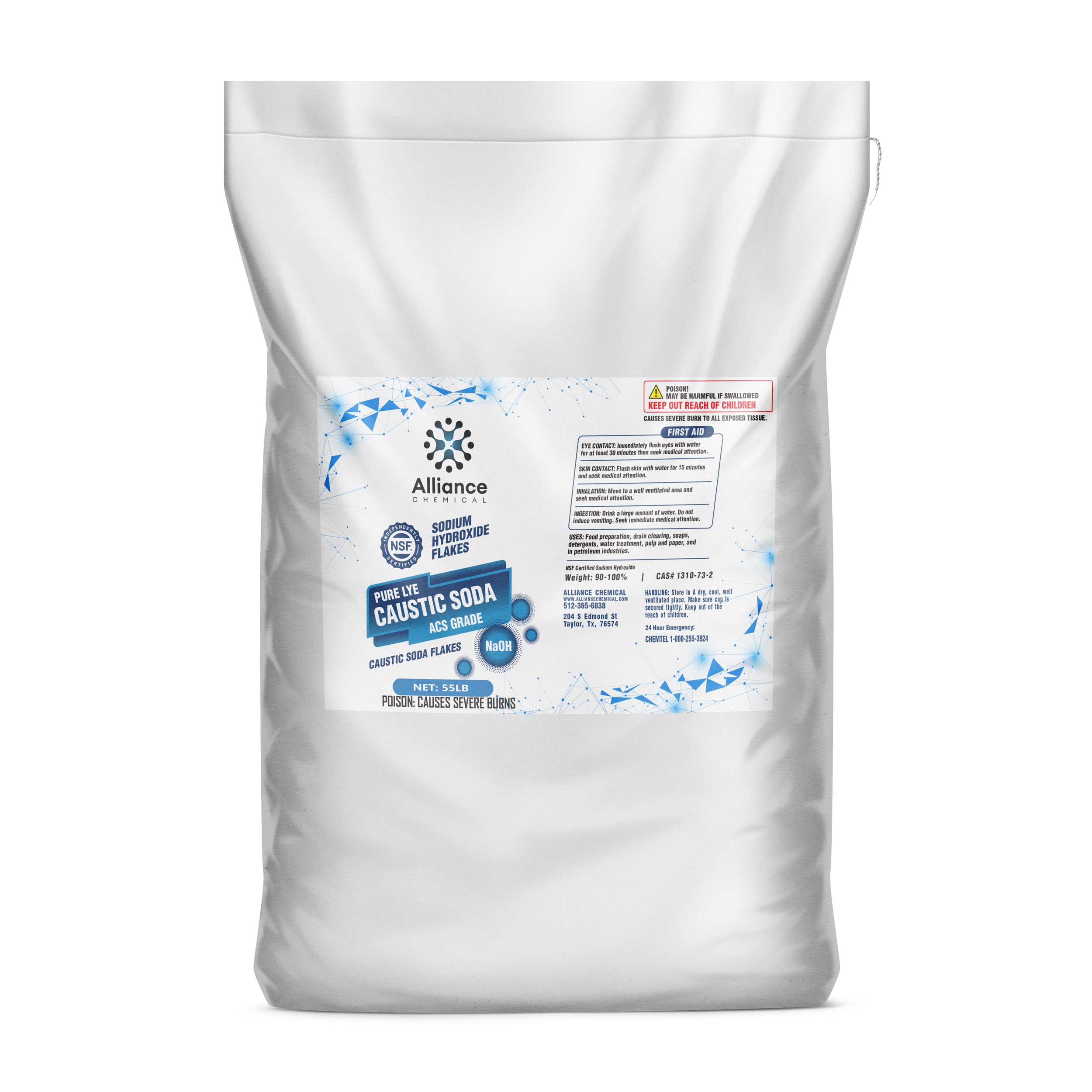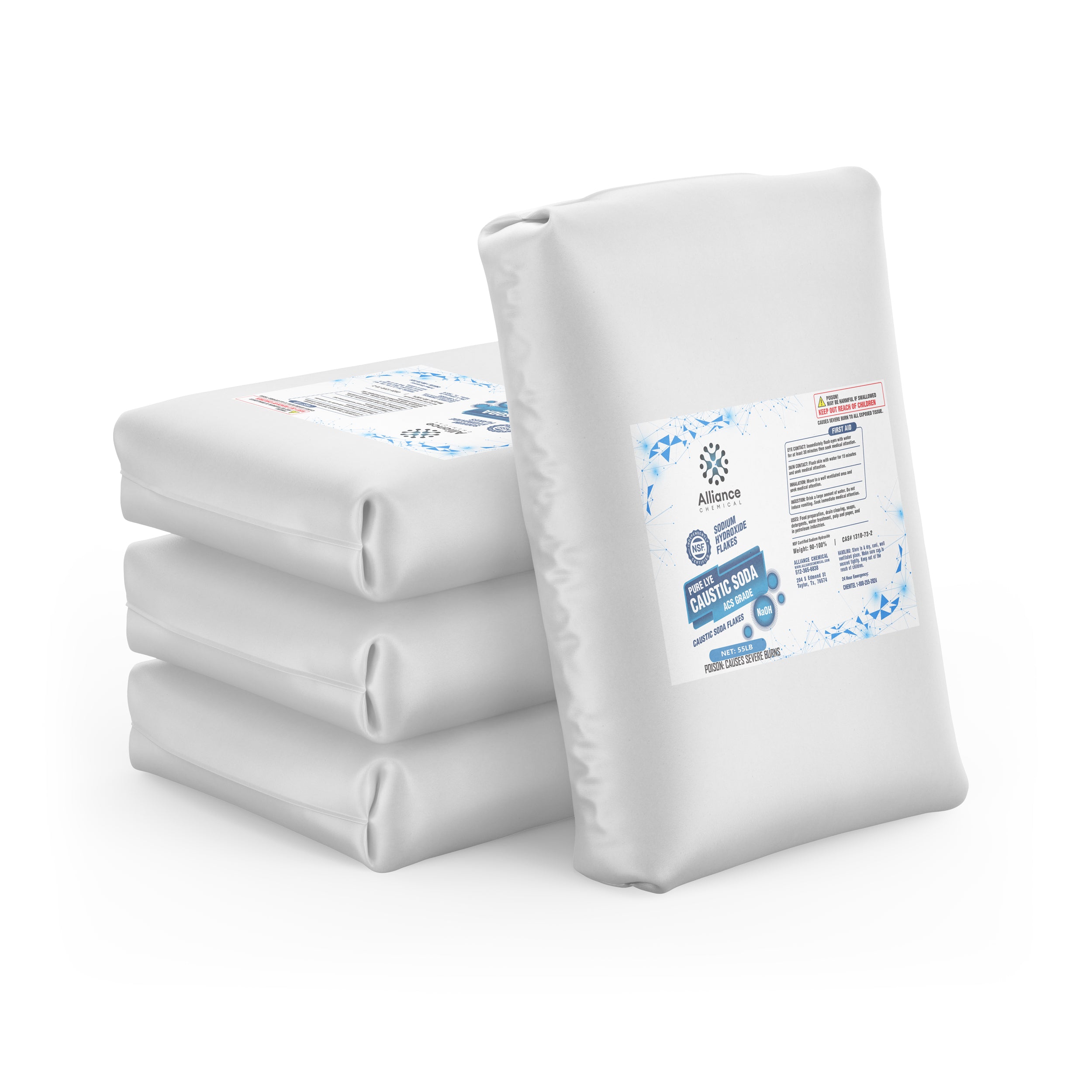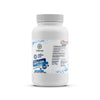Ask a question
Product Overview
Sodium Hydroxide Flakes ACS Grade is a high-purity inorganic base with the formula NaOH. Also known as Caustic Soda or Lye, this product consists of white, deliquescent flakes manufactured to meet strict American Chemical Society (ACS) specifications. With a typical assay ranging from 99.0% to 100.5%, it is designed for critical applications requiring minimal impurities.
This reagent-grade material differs from technical grades by maintaining extremely low levels of trace metals (such as iron, lead, and mercury) and contaminants like chloride and sulfate. It is the preferred choice for analytical laboratories, chemical synthesis, and high-precision water treatment processes where consistent alkalinity and reaction stoichiometry are essential.
Key Properties
- CAS Number: 1310-73-2
- Grade: ACS Reagent Grade
- Assay (NaOH): Min 99.0% – Max 100.5%
- Appearance: White, solid flakes
- Molecular Formula: NaOH
- Molecular Weight: 40.00 g/mol
- Solubility: Highly soluble in water (exothermic)
- Density: 2.13 g/mL at 20°C
- Residue After Ignition: Max 0.07%
- Heavy Metals (as Pb): Max 0.5 ppm
- Iron (Fe): Max 0.2 ppm
- Chloride (Cl): Max 0.5 ppm
Common Applications
- Analytical Chemistry: Used as a standard titrant and buffering agent in laboratory settings requiring ACS-level purity.
- Chemical Synthesis: Acts as a strong base in organic synthesis, including ester hydrolysis and condensation reactions.
- Water Treatment: Precision pH adjustment and heavy metal precipitation in industrial wastewater treatment facilities.
- Saponification: High-purity reactant for specialty soap manufacturing and surfactant production.
- Textile Processing: Used in scouring and mercerizing processes where contaminant-free caustic is required to protect fiber integrity.
Safety Precautions
Sodium Hydroxide Flakes are highly corrosive and hygroscopic. Proper personal protective equipment (PPE), including chemical-resistant gloves, face shields, and impervious clothing, is mandatory during handling to prevent severe skin burns and eye damage. Avoid inhalation of dust.
Storage: Store in a cool, dry, well-ventilated area in tightly closed HDPE containers. The product readily absorbs moisture and carbon dioxide from the air. Keep away from strong acids, organic materials, and metals such as aluminum and zinc.
Shipping & Disposal: This material is regulated as a hazardous material for transport (UN 1823, Sodium Hydroxide, Solid, Class 8, PG II). Dispose of contents in accordance with local, state, and federal environmental regulations.
Benefits
ACS Purity: Minimizes process variables with strictly controlled trace metal limits.
Efficient Dosing: Solid flake form allows for precise weighing and solution preparation.
Versatile Utility: Suitable for both laboratory research and industrial batch processing.
Traceability: Meets rigorous standards for documentation and quality control.
Related Products
| Property | Value |
|---|---|
| Molecular Weight | 40 g/mol g/mol |
| Formula | NaOH |
| Grade | ACS |
| Flash Point | Not applicable |
| Form | Solid |
| Solubility | Highly soluble in water, moderate solubility in alcohols, forms alkaline solutions |
| Appearance | White hygroscopic flakes |
| Melting Point | 318°C °C |
| Boiling Point | 1388°C °C |
| Specific Gravity | 2.13 |
| Industry | Industrial, Wastewater, Other |
MHV-DD1-MYB
$16.32
Unit price
Compare Products
| Price |
|---|
| SKU |
| Rating |
| Discount |
| Vendor |
| Tags |
| Weight |
| Stock |
| Short Description |

